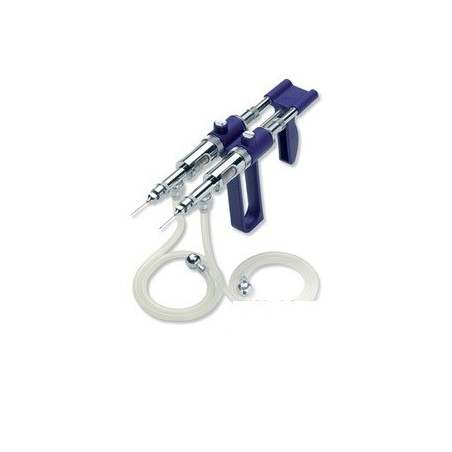Introduction
The porcine respiratory disease complex (PRDC) is a multifactorial disease which increases morbidity and mortality rates causing remarkable economic losses. Some pathogens such as PRRSV, PCV2, SIV, Mycoplasma hyopneumoniae (MHYP) or Actinobacillus pleuropneumoniae (APP) are considered as primary agents but other microbes such as Haemophilus parasuis (HPS), Streptococcus suis (SSUI) or Mycoplasma hyorhinis (MHYR) have been described with an important role as secondary agents. Detection of all these parameters is sometimes problematic and therefore our aim was to assess if any difference between bronchoalveolar lavage fluid (BALF) and bronchial scraping (BS) exists.

Material and Methods
A group of 63 animals coming from three different farms was selected for this study. That collection included animals from main production stages such as suckling piglets, weaned off animals, fattening pigs and sows. BALF and BS were taken from each animal and later their respective nucleic acids were isolated and tested by Exopol designed qPCR assays for all the parameters mentioned above. Fisher exact test was used to find differences in the detection of each parameter between BALF and BS.
Results
All pathogens were detected in both kind of specimen (BALF/BS): PRRSV(31.1%/30.7%), PCV2(3.9%/4%), SIV(2.6%/5.3%), MHYP(26%/29.6%), HPS(44.2%/46.7%), APP(16.9%/22.7%), SSUI(50%/87.84%) and MHYR(62.3%/77.3%). Detection in BS was significantly better for MHYR (p=0.049) and SSUI (p=0.01).
Discussion and Conclusion
Many practitioners reckon that BS might be less invasive for the animal and overall easier to collect, hence, these data present BS as an equally effective or even better alternative to BALF for detecting main PRCD agents.
Arnal J.L., Benito A.A., Bello A., Chacón G., Serrano J.D., Fernández A., Sanz C., Baselga R. Assessment of different samples to detect main swine respiratory pathogens. 4th Congress of European association of Veterinary Laboratory Diagnosticians (EAVLD). November 2016.





